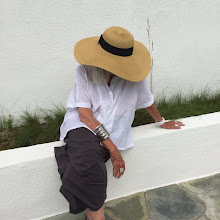Monday, December 18, 2017
Monday, November 27, 2017
Monday, March 27, 2017
Review in Photograph Magazine by Lyle Rexer
Painting: Photographs by Marcia Lippman at Nailya Alexander Gallery
by Lyle RexerThis surprising exhibition from Marcia Lippman, on view at Nailya Alexander Gallery through March 2, is not what it first appears to be. Or rather, its obvious pleasures are not to be enjoyed without some chastening. Although the photographer herself would probably disagree, the show is a bit like a brocade handbag with a blackjack inside. Lippman seems to have surrendered completely to the blandishments of painting, which early on supplied photography its compositional models, display ambitions, and critical language.
Seduced by the surface effects of European masters from three centuries, Lippman photographed details from paintings that include swatches of gowns, lace ruffs, the sensuous backs of nudes. These virtuoso passages are replete with strokes of the artists’ brush that incarnate the mystery photography can never achieve: the tactile miracle of transformation, as specific gestures become significant wholes. In the age of the cell phone, most of us involved with photography have shot details in museums with a mixture of envy and despair. As it has since the days of Steichen, poor photography, recorder of two dimensions in the real world, must wait on such condescending plenitude.
Except for the cracks. Lippman scans her film negatives and uses software to heighten ever so slightly the appearance of tiny cracks in the surface of the paintings. These and other delicate modifications emphasize the inevitable breakdown of the artist’s materials under the relentless pressure of time. It is in facing the question of time that photography asserts its analytical priority, and Lippman’s project displaces genuflection with introspection. These squares of eternity, of supposedly timeless beauty, are rendered mortal. Lippman’s photographs hold open the process that time itself would seal up, to show us the work of time on pigments, oils, and canvas. This process contests the painters’ gestures – more visible through Lippman’s intervention. In seeming to submit to painting, these photographs triumph over it. Or rather, they render its ultimate pathos (as only photographs can), a pathos intimately bound up with love.
Tuesday, January 24, 2017
Painting: Photographs by Marcia Lippman
I
am a thief of Beauty.
I
am a collector, and a hoarder of Beauty.
My
narrative consists in the act of looking, and of stealing glimpses of timeless
grandeur and small suspended moments.
These
are the lush details that penetrated me, marked me, and thus are all fragments
of the archeology of my own past and my perceptual process, which, now merged,
have been reframed into something entirely new.




Wednesday, January 4, 2017
Friday, December 2, 2016
Tuesday, June 28, 2016
Constellation
“It is not
that what is past casts its light on what is present, or what is present its
light on what is past; rather… what has been comes together in a flash with the
now to form a constellation” ~Walter Benjamin
These new photographs locate the
small areas of concentrated emotion in old paintings and sculpture, where
history, memory, and the artist’s imagination coalesce. Made in 2014-2016,
these images of images isolate rapturous details where the meanings of life
accumulate. In one photograph, a black string tied into an off-kilter bow connects
the edges of a white collar that barely covers the pale human neck below; in
another, a half-closed hand falls on plush fabric, the result of a swoon, an
illness, a death? Through the careful framing of a particular, instead of the
whole, this work simultaneously invokes fragility, violence, romance, and mortality.
I use the camera to create a time
warp. The viewer’s eye volleys between mediums, between the temporal nature of
photography and the metaphysical power of painting and sculpture. In these
photographs of ancient art, the past continues into the present. These pictures,
mostly of European art, were made in the United States over a two-year period,
as I photographed in museums, antique shops, and historic houses. During the
previous forty years, I made black and white gelatin silver prints, focusing on
the pictorial and painterly aspects of photography. Working now in color and
digitally, each capture is in dialogue with my analogue negatives. This project
uses new technology to investigate old aesthetic and human values that do not
disappear with technical change. The clarity of these photographs is a point of
entry into the painting or sculpture. Paint cracks and the granularity of stone
are intensified, underscoring their vulnerability. Brushstrokes are
exaggerated, emphasizing the human hand that made them.
These pictures transport the viewer
to a “constellation” of old and new techniques and imagery. My photographs
reject the false perfection of the whole, and instead lay claim to the ambiguity
of a single gesture. These pictorial fragments dislodge us even while their
familiarity—a hand, a dress, a neck—unite us with our ancient selves.
Subscribe to:
Comments (Atom)






















